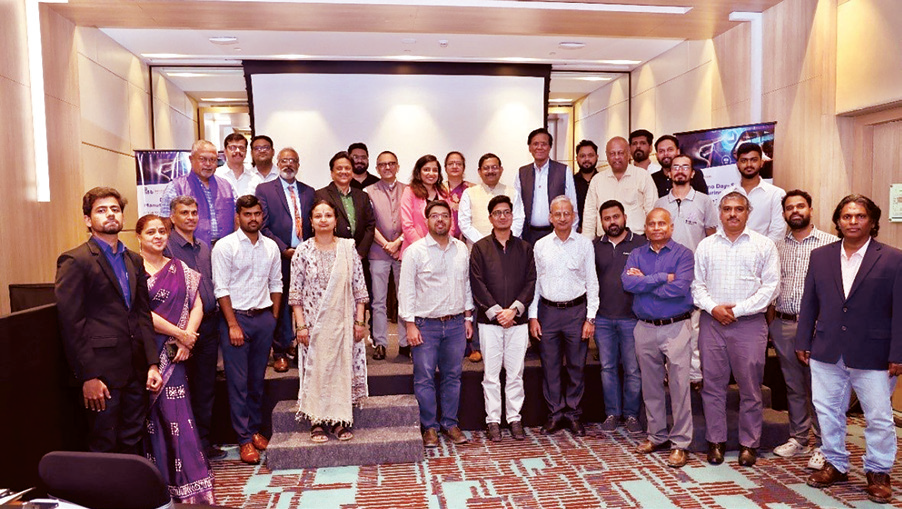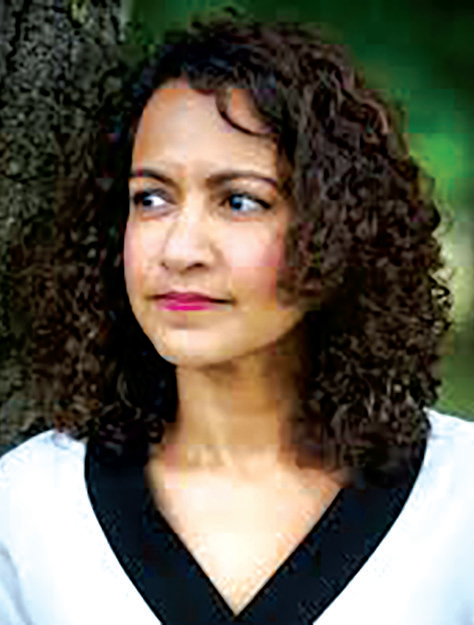
Weaving a Legecy: Vimor is a brand built around the love for handlooms and heritage
Rachana Ramesh
“If you look at textiles, there is commonality. In terms of design, motive or material. If you seriously look, you will find. For the museum, my main goal is to celebrate our commonality instead of pointing at our differences,” says Pavithra Muddaya while pointing to the contrasting zari designs on a dark purple saree put on display. The motifs found on the upper portion of the saree bare roots in Andhra Pradesh. However, a thick border of design on the bottom is drawn from the flag of Awadh, hidden miles away in Uttar Pradesh. “Who takes ownership of it? Somebody in Lucknow or Hyderabad?,” she posed a contradiction.
Textile is more than clothing, a saree is more than a wrap. It is a form of communication and a way of storytelling, where the loom is the canvas to the weaver and the textile is a service to the customer. It is a marker of identity, inheritance and heritage. If you are a woman wrapped in saree, you are assumed to have packed your bags from your paternal home to now make another man’s house, a home. If you are seen in a kurti, you must be a working woman who lives a lousy life beyond the control of her parents. As our second skin, fabric is the mediating surface between our physical body and the world beyond.
The intimate touch of cloth on skin is a universal but often overlooked experience, while fabric plays an essential role in how we fashion our public identity.
“A lot of textiles came from old collections – temple auctions or a personal donation. Many times we don’t know where exactly they are coming from. But they have human stories attached to them,” says Arup, the third generation who has now joined the legacy with his range of colourful lungis and sarongs, as he points to another saree on display in the museum. This is a deep maroon saree with an embroidery of a tamil name in the corner of the textile. Must have come from the city with lush temples – Chennai.
th lush temples – Chennai. Located in the beautiful bylanes of Victoria Layout, a portion of Muddaya’s house has been turned into a museum in an attempt to showcase ancient, forgotten weaves and to be a platform for customers to interact with weavers. A walk around this cosy structure is a lesson in history. “This is about your grandmother and my grandmother. It is living history,” says Pavithra.
Every saree here has a story. May it be the Kuri Polla, embroidered in 1909 by Nanjamma Ballachanda, Muddaya’s paternal grandmother, this is a sample of what young Kodava women made, while learning needlework. The origins of the motifs are hard to attribute except for the medallions, commonly embroidered world over. Or the Datthi Seere. These sarees were often woven for children. Hence this length of just 3.15 metres, manageable for a little girl. It has two pallus, which made it easier for her to handle, in the days when petticoats weren’t worn. The border was woven with interlocking korvai technique.
But how did Vimor start?
“My mother was the first manager of Cauvery Arts and Crafts on MG road. It was in the late 50s, when women didn’t work in general,” said Pavithra as she started the narration of the story of how Vimor came about. Two women, big names in the industry of handloom, helped Chimy Nanjappa, Pavithra’s mother. First – Pupul Jayakar, an Indian cultural activist writer, best known for her work in reviving traditional and village arts, handlooms, and handicrafts in post independence India. Second, Kamaladevi Chattopadhy, who was an Indian social reformer and freedom activist most remembered for her contribution to the Indian Independence movement; for being the driving force behind the renaissance of Indian handicrafts and theatre in independent India and for the upliftment of the socio-economic standard of Indian women by pioneering the co-operation.
Pupul Jayakar, also known as “India’s czarnia of culture” founded arts festivals that promoted Indian arts in France, Japan and the United States. “She started the festivals of India and in those days, it was called the world’s fair. My mother was selected to go to the world’s fair in the year 64, 65 and 67, and each time, it was a six or seven month stint,” says Pavithra.
when Pavithra’s father passed away, her mother Chimy Nanjappa along with the 16- yearold established Vimor in 1974 and started off by selling old sarees auctioned by temples. “My mother and I needed to do something to support ourselves financially. She had met a girl called Vimor in New York who was from Indonesia. That name was stuck in her head. Our house was named Vimor and when we registered, it automatically became Vimor,” says Pavithra. These were famously known as ‘temple sarees&rsq
 English daily published in Bengaluru & Doha
English daily published in Bengaluru & Doha






